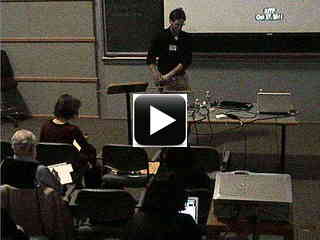Traditionally, in stellar binary systems, photometry is used primarily to measure eclipse light curves and infer the objects' size, and spectroscopy (Doppler) to measure radial velocity curves and derive the components' orbits and masses. Kepler's high precision and continuous photometry allows us to use photometry to study the orbit, and reveal the existence of non-eclipsing binary companions. Orbital photometry includes three modulations correlated with the orbit: beaming, tidal ellipsoidal deformation and reflection/heating. I will describe this new approach, present some of the already published and recently submitted results, and show preliminary results from on-going projects. Those include looking for orbital photometry, including beaming, in known transiting systems, and looking for new non-eclipsing systems using photometry. The techniques used in the study of orbital photometry have common components with those used in asteroseismology, therefore they are of interest to the asteroseismology community
 Other video options
Other video options
To begin viewing slides, click on the first slide below. (Or, view as pdf.)
![[01]](tn/01.jpg)
![[02a]](tn/02a.jpg)
![[02b]](tn/02b.jpg)
![[02c]](tn/02c.jpg)
![[03a]](tn/03a.jpg)
![[03b]](tn/03b.jpg)
![[03c]](tn/03c.jpg)
![[03d]](tn/03d.jpg)
![[04a]](tn/04a.jpg)
![[04b]](tn/04b.jpg)
![[04c]](tn/04c.jpg)
![[04d]](tn/04d.jpg)
![[05]](tn/05.jpg)
![[06a]](tn/06a.jpg)
![[06b]](tn/06b.jpg)
![[06c]](tn/06c.jpg)
![[06d]](tn/06d.jpg)
![[06e]](tn/06e.jpg)
![[06f]](tn/06f.jpg)
![[06g]](tn/06g.jpg)
![[06h]](tn/06h.jpg)
![[07a]](tn/07a.jpg)
![[07b]](tn/07b.jpg)
![[07c]](tn/07c.jpg)
![[07d]](tn/07d.jpg)
![[07e]](tn/07e.jpg)
![[07f]](tn/07f.jpg)
![[07g]](tn/07g.jpg)
![[08a]](tn/08a.jpg)
![[08b]](tn/08b.jpg)
![[08c]](tn/08c.jpg)
![[08d]](tn/08d.jpg)
![[09a]](tn/09a.jpg)
![[09b]](tn/09b.jpg)
![[09c]](tn/09c.jpg)
![[09d]](tn/09d.jpg)
![[10a]](tn/10a.jpg)
![[10b]](tn/10b.jpg)
![[10c]](tn/10c.jpg)
![[10d]](tn/10d.jpg)
![[10e]](tn/10e.jpg)
![[10f]](tn/10f.jpg)
![[11a]](tn/11a.jpg)
![[11b]](tn/11b.jpg)
![[11c]](tn/11c.jpg)
![[12a]](tn/12a.jpg)
![[12b]](tn/12b.jpg)
![[12c]](tn/12c.jpg)
![[13a]](tn/13a.jpg)
![[13b]](tn/13b.jpg)
![[13c]](tn/13c.jpg)
![[13d]](tn/13d.jpg)
![[13e]](tn/13e.jpg)
![[13f]](tn/13f.jpg)
![[14a]](tn/14a.jpg)
![[14b]](tn/14b.jpg)
![[14c]](tn/14c.jpg)
![[15a]](tn/15a.jpg)
![[15b]](tn/15b.jpg)
![[15c]](tn/15c.jpg)
![[15d]](tn/15d.jpg)
![[15e]](tn/15e.jpg)
![[15f]](tn/15f.jpg)
![[15g]](tn/15g.jpg)
![[15h]](tn/15h.jpg)
![[15i]](tn/15i.jpg)
![[16a]](tn/16a.jpg)
![[16b]](tn/16b.jpg)